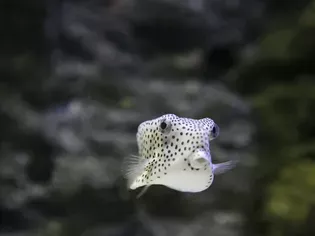Fish Mouth Types and Their Uses
Updated on 05/26/24

Fish Mouth Types and Their Uses
Introduction
The mouths of fish are as diverse as the fish themselves, ranging from tiny, toothless mouths to massive, gaping maws. Each type of mouth has evolved to suit the specific feeding habits of the fish that possesses it. In this blog post, we will explore the different types of fish mouths and their uses, providing examples of fish species that possess each type of mouth.
Types of Fish Mouths
1. Terminal Mouth
* Description: The mouth is located at the front of the head, facing forward.
* Uses: Terminal mouths are common in fish that feed on prey that swim in front of them, such as minnows, shrimp, and small fish.
* Examples: Trout, bass, tuna, sharks
2. Subterminal Mouth
* Description: The mouth is located slightly below the front of the head, facing downward.
* Uses: Subterminal mouths are found in fish that feed on prey that live on or near the bottom of the water, such as snails, clams, and worms.
* Examples: Flounder, sole, catfish
3. Inferior Mouth
* Description: The mouth is located on the underside of the head, facing downward.
* Uses: Inferior mouths are common in fish that feed on prey that live on the bottom of the water, such as snails, clams, and crabs.
* Examples: Stingrays, skates, rays
4. Protrusible Mouth
* Description: The mouth can be extended forward, allowing the fish to reach prey that is out of reach of other types of mouths.
* Uses: Protrusible mouths are found in fish that feed on prey that is stationary or slow-moving, such as insects, worms, and small fish.
* Examples: Pipefish, seahorses, archerfish
5. Papillose Mouth
* Description: The mouth is covered in small, fleshy papillae that help to trap prey.
* Uses: Papillose mouths are found in fish that feed on plankton and small invertebrates.
* Examples: Anchovies, sardines, menhaden
6. Sucker Mouth
* Description: The mouth has a flattened, disk-like shape that allows the fish to attach itself to surfaces.
* Uses: Sucker mouths are found in fish that feed on algae and other organisms that grow on surfaces.
* Examples: Plecostomus, Chinese algae eater, remora
7. Filter-Feeding Mouth
* Description: The mouth is large and contains specialized structures that filter food particles from the water.
* Uses: Filter-feeding mouths are found in fish that feed on plankton and other small organisms suspended in the water.
* Examples: Whale shark, basking shark, manta ray
Conclusion
The diversity of fish mouths is a testament to the incredible adaptability of these aquatic creatures. Each type of mouth has evolved to suit the specific feeding habits of the fish that possesses it, allowing fish to exploit a wide range of food sources in a variety of habitats. By understanding the different types of fish mouths and their uses, we can gain a deeper appreciation for the complexities and wonders of the underwater world.
Explore More Pets

Freshwater Aquarium Filters
How to Deal With Cloudy Aquarium Water

Saltwater Aquarium Filters
How Do You Remove Chloramines From Tap Water?

Freshwater Aquariums & Habitat
Can I Keep My Koi Fish Inside?

Saltwater Aquariums & Habitat
14 Best Floating Plants for Your Aquarium

Freshwater Fish Health
How to Treat Ich on Freshwater Fish

Saltwater Fish Health
Fin Rot in Aquarium Fish

Freshwater Aquarium Filters
How to Do Aquarium Water Changes

Saltwater Fish Health
How Do Fish Get Parasites?
